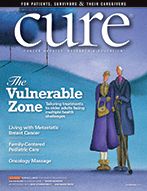Astounding Possibilities with 3-D Printing
Today, 3-D printers are demonstrating a revolutionary ability to mass-produce a range of products, and they are taking their place in medicine
Mike Hennessy, Sr.

Mike Hennessy, Sr.
In the 1970s, when the series “The Six Million Dollar Man” and “The Bionic Woman” appeared on television, the concept of replacing human parts with better, stronger, manmade ones was pure fiction.
These days, that kind of medical advancement is within our sights, and through a source that would have been difficult to fathom four decades ago — highly complex computer printers.
Today, 3-D printers are demonstrating a revolutionary ability to mass-produce a range of products, and they are taking their place in medicine — including in cancer research and treatment. These machines can print not just with ink, but with any number of materials, including human tissue, building 3-D items layer by layer. The possibilities are astounding.
In a special report in this issue of CURE, we discuss progress in this cutting-edge field and what it may soon mean to patients. By copying tumor tissue and then growing it in labs, scientists can test the effectiveness of experimental cancer drugs. Also emerging is the ability to replace damaged cartilage and bones, and poised on the horizon is the creation of living, working human organs. Those who take medications may eventually find themselves swallowing products made on 3-D printers; the U.S. Food and Drug Administration has already approved an epilepsy pill being manufactured that way. All of these techniques can potentially be applied to cancer treatment.
3-D printing is not yet pervasive in oncology, but in keeping with CURE’s mission to both educate and inspire, we want you to know that such unprecedented technology is coming, and how it might be able to help you or your loved ones affected by cancer.
In this issue, we also delve into other emerging trends, such as family-centered care. At a growing number of hospitals, this is becoming an important strategy for making decisions about cancer care and leaving patients satisfied with their experience. Too, we take a detailed look at the pioneering field of oncology massage, and what patients should look for when seeking treatment.
Among articles focused on the science of treatment is our cover story, which assesses when aggressive cancer therapies are appropriate for older patients or those with comorbidities — and when those regimens should be modified. In the world of metastatic breast cancer, we consider standard treatments and those on the horizon. And in a piece on surveillance for cancer recurrence, we present expert advice on how patients can handle an ongoing screening process, both medically and emotionally.
We hope the fall issue of CURE brings you information that is not only interesting but useful, filling gaps in your understanding with knowledge that will help you move forward with confidence during your cancer journey. As always, thank you for reading.
Mike Hennessy, Sr.Chairman and CEO
